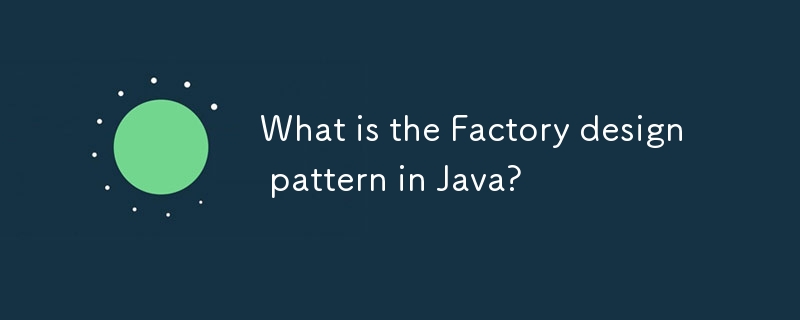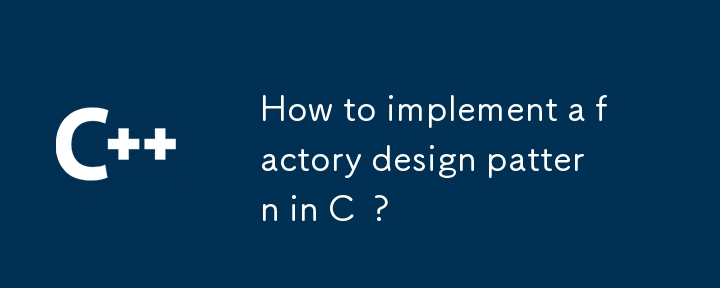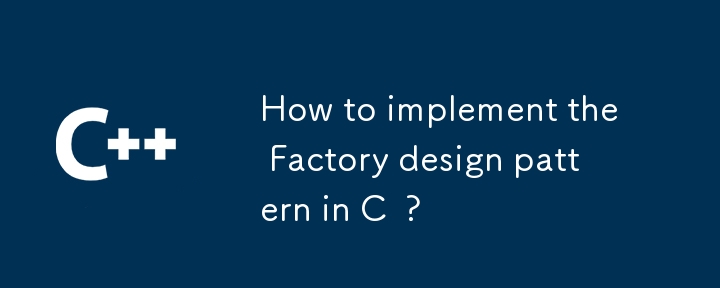<?php
interface IHuman
{
function GetName();
}
class ManClass implements IHuman
{
public function GetName()
{
return "I'm man."."<br>";
}
}
class WomanClass implements IHuman
{
public function GetName()
{
return "I'm Woman."."<br>";
}
}In object-oriented programming, the most common method is a new operator to generate an object instance, and the new operator is used to construct an object instance. But in some cases, the new operator directly generating objects will cause some problems. For example, the creation of many types of objects requires a series of steps: you may need to calculate or obtain the object's initial settings; choose which sub-object instance to generate; or you must generate some helper objects before generating the object you need. In these cases, the creation of a new object is a "process", not just an operation, like a gear transmission in a larger machine.
All resources on this site are contributed by netizens or reprinted by major download sites. Please check the integrity of the software yourself! All resources on this site are for learning reference only. Please do not use them for commercial purposes. Otherwise, you will be responsible for all consequences! If there is any infringement, please contact us to delete it. Contact information: admin@php.cn
Related Article
 Factory design pattern in Java example
Factory design pattern in Java example
13 Jul 2025
The factory pattern is to encapsulate object creation logic through a factory class, so that the caller does not need to care about the specific implementation class. 1. Define the unified behavior specification of interface Shape; 2. Create Circle and Rectangle implementation classes; 3. Write ShapeFactory factory class to return different instances according to parameters; 4. Use the factory class to obtain objects and call methods. This mode is suitable for scenarios where object creation is complex, the type is often changed, or the principle of opening and closing is required. It can effectively decouple the caller and specific classes and reduce maintenance costs.
 Explain the Factory design pattern in Java.
Explain the Factory design pattern in Java.
17 Jul 2025
TheFactorydesignpatterninJavaisacreationaldesignpatternthatcentralizesandabstractsobjectcreationlogic,reducingtightcouplingbetweenclasses.1)Itallowsobjectstobecreatedwithoutexposingtheinstantiationlogictotheclientcode.2)Itisusefulwhentheexacttypeofob
 What is the Factory design pattern in Java?
What is the Factory design pattern in Java?
13 Aug 2025
The factory design pattern is used to create objects without specifying specific classes. The factory method determines which class to instantiate based on input. For example, DocumentFactory returns PdfDocument or WordDocument instances according to the document type, thereby realizing the decoupling of client code from specific implementations, so that when adding new document types, you only need to expand the factory method without modifying client code. This pattern is suitable for scenarios where object types are determined at runtime, need to centrally create logic or system needs to support flexible expansion, and ultimately improve the maintainability, scalability and loose coupling of the code.
 How to implement a factory design pattern in C ?
How to implement a factory design pattern in C ?
17 Jul 2025
ToimplementthefactorydesignpatterninC ,firstdefineacommoninterface,thencreateconcreteproductclasses,implementafactoryclasswithastaticcreationmethod,andfinallyusethefactorytodecoupleobjectcreationfromclientcode.(1)DefineanabstractbaseclassProductwith
 How to implement the Factory design pattern in C ?
How to implement the Factory design pattern in C ?
30 Aug 2025
To implement the factory method pattern in C, first define an abstract product class Product, then create a specific product class ConcreteProductA and ConcreteProductB to implement the use method; then define the abstract factory class Factory, including the pure virtual createProduct method; then implement the specific factory ConcreteFactoryA and ConcreteFactoryB, respectively, return the corresponding product instances; finally, the client calls createProduct through the factory interface to create and use objects, thereby achieving the separation of object creation and use, which conforms to the principle of opening and closing and dependent abstract design concept.
 What is the difference between a Factory, an Abstract Factory, and a Builder design pattern?
What is the difference between a Factory, an Abstract Factory, and a Builder design pattern?
21 Aug 2025
FactoryMethod is used to decide the instantiation of specific subclasses at runtime, suitable for different variant creation of a single product type; 2. AbstractFactory is used to create a family of related or dependent objects to ensure compatibility between products, suitable for cross-platform or theme systems; 3. Builder is used to construct complex objects in step by step, especially when the object has multiple optional configurations or needs to avoid telescoping constructors, which is suitable for scenarios where the construction process is complex and needs to be set clearly.


Hot Tools

PHP library for dependency injection containers
PHP library for dependency injection containers

A collection of 50 excellent classic PHP algorithms
Classic PHP algorithm, learn excellent ideas and expand your thinking

Small PHP library for optimizing images
Small PHP library for optimizing images




